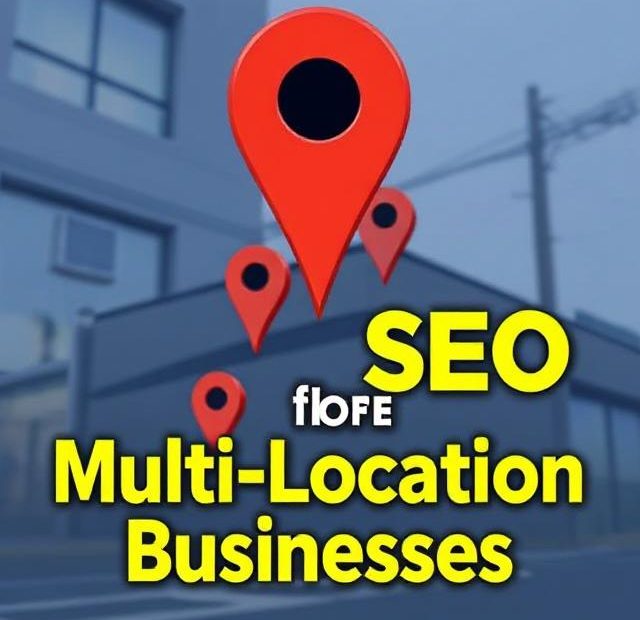Running a business with multiple locations is exciting — but when it comes to SEO, it can get tricky fast. You want each location to stand out in local search results, but how do you make that happen without confusing Google or spreading your SEO efforts too thin?
That’s where Local SEO for multi-location businesses comes in. Whether you have 3 branches or 30, this guide covers actionable tips to get each one showing up for its specific area — so more local customers find you instead of your competitors.
1. Create a Google Business Profile for Each Location
Your first move? Set up (or claim) a separate Google Business Profile (GBP) for each business location. Google uses these profiles to show your business in Maps and local packs, so skipping this step means you’re invisible where it matters most.
Tips for optimizing GBPs:
-
Use the exact location name (e.g., “Fresh Bites – Miami Beach”)
-
Keep the NAP (Name, Address, Phone) accurate and consistent
-
Upload unique images for each location
-
Choose the correct primary and secondary categories
-
Add localized business hours and services
If your business has many locations, consider using the bulk verification process to save time.
2. Create Location-Specific Pages on Your Website
Each branch needs its own landing page on your website. Don’t cram everything into one general “locations” page — this waters down SEO potential and confuses search engines.
What to include on location pages:
-
Business name, address, and phone number (NAP)
-
Unique description of that branch
-
Services or offers specific to that location
-
Google Map embed and driving directions
-
Local reviews or testimonials
-
Localized schema markup (more on this below)
Example URL structure:yourbusiness.com/locations/miami-beachyourbusiness.com/locations/orlando
Avoid duplicating content — even if your services are the same, write them slightly differently and mention local neighborhoods or landmarks.
3. Use Local Schema Markup for Each Location
Structured data (or schema) tells Google exactly what each page is about. For multi-location SEO, adding LocalBusiness schema to each page improves your visibility in rich results and helps Google match your business to local searches.
You can include:
-
Business name
-
Address
-
Phone number
-
Opening hours
-
Latitude/longitude
-
Review ratings
Tools like Merkle’s Schema Generator, Yoast SEO, or Rank Math (for WordPress) make adding schema easier — no coding knowledge required.
4. Get Local Citations for Each Branch
Citations are mentions of your business online — especially in local directories like Yelp, Yellow Pages, and Bing Places. For businesses with multiple locations, it’s important to build citations individually for each location.
Best practices:
-
Use consistent NAP details
-
Use a local phone number (not a central call center number)
-
Create listings on both national and local directories
-
Monitor and clean up duplicate or incorrect listings using tools like Moz Local or BrightLocal
Citations help search engines verify your business information and improve your local relevance.
5. Collect and Manage Reviews by Location
Reviews are a big local SEO signal. And for multi-location businesses, Google lets users leave reviews for specific branches — not just the brand overall.
How to build reviews for each location:
-
Ask for reviews via email or SMS, linking directly to each location’s GBP
-
Respond to reviews personally and mention the location in your reply
-
Highlight positive reviews on that branch’s local page
Pro tip: Set up automated review requests based on location through your CRM or POS system.
6. Create Locally Relevant Content
Generic blog posts won’t cut it for local SEO. Each location needs some location-based content to show relevance to its area.
Ideas include:
-
Blog posts about local events
-
Promotions exclusive to one branch
-
Neighborhood spotlights or community guides
-
Employee stories or behind-the-scenes features
This helps each branch’s page rank higher for long-tail and geo-specific keywords — and builds trust with the community.
7. Use Google Posts Strategically
Google Posts allow you to share updates, offers, and events directly on your GBP — and yes, you can create unique posts for each location.
Best use cases:
-
Branch-specific sales or events
-
Seasonal promotions
-
Community involvement (sponsoring a school event, etc.)
Fresh content signals activity and can improve your profile’s ranking. Make this part of your weekly routine.
8. Implement a Location Finder or Store Locator
If you have many branches, adding a store locator tool to your site makes it easier for users (and Google) to find nearby locations. Good store locators are SEO-friendly, mobile-optimized, and provide:
-
Location search via zip/postal code
-
Links to each individual location page
-
Local business info and maps
Plugins like Storemapper, StoreRocket, or custom-built locator pages can boost user experience and SEO at the same time.
9. Track Performance by Location
Once everything is in place, monitor how each branch is performing. Use tools like:
-
Google Business Profile Insights (impressions, calls, direction requests)
-
Google Analytics (page visits, conversions by location)
-
Google Search Console (queries and impressions per location page)
You can also use tools like Whitespark or BrightLocal to compare local ranking across locations and track competitor performance.
Final Thoughts
Multi-location SEO takes more work than single-location optimization — but it pays off. When each of your branches ranks well locally, you build trust, drive foot traffic, and dominate your industry across regions.
To recap:
-
Optimize Google Business Profiles separately
-
Create unique pages and content for each location
-
Collect reviews and build citations branch by branch
-
Monitor progress and update regularly
With the right strategy, every location becomes its own powerhouse — attracting customers, building brand loyalty, and growing your business from the ground up.
Also, you can learn more about Get Local Customers here.
